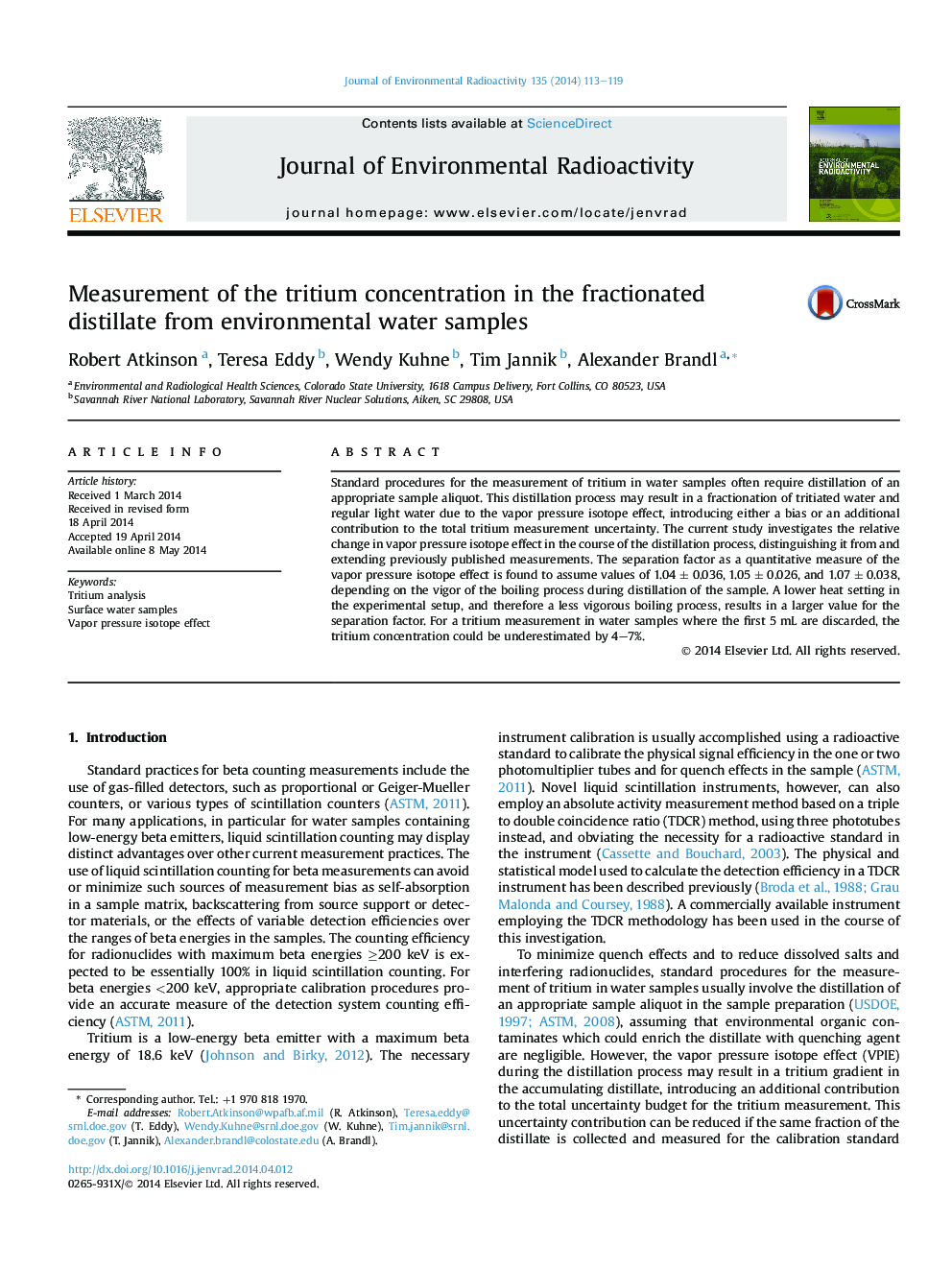| Article ID | Journal | Published Year | Pages | File Type |
|---|---|---|---|---|
| 1737954 | Journal of Environmental Radioactivity | 2014 | 7 Pages |
•Titium measurements in environmental water samples.•Distilled samples.•Vapor pressure isotope effect.•Depending on boiling mode.•Potential underestimate of tritium activity concentration of 4–7%.
Standard procedures for the measurement of tritium in water samples often require distillation of an appropriate sample aliquot. This distillation process may result in a fractionation of tritiated water and regular light water due to the vapor pressure isotope effect, introducing either a bias or an additional contribution to the total tritium measurement uncertainty. The current study investigates the relative change in vapor pressure isotope effect in the course of the distillation process, distinguishing it from and extending previously published measurements. The separation factor as a quantitative measure of the vapor pressure isotope effect is found to assume values of 1.04 ± 0.036, 1.05 ± 0.026, and 1.07 ± 0.038, depending on the vigor of the boiling process during distillation of the sample. A lower heat setting in the experimental setup, and therefore a less vigorous boiling process, results in a larger value for the separation factor. For a tritium measurement in water samples where the first 5 mL are discarded, the tritium concentration could be underestimated by 4–7%.
